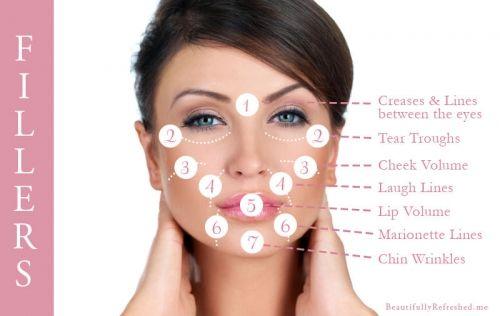As many readers may have heard, hyaluronic acid injections are a type of skin filler. With so many types of skin fillers available, it can be overwhelming to know which one is right for you. Here, we will discuss this topic in more detail.
As the name suggests, skin fillers are used to “fill” specific areas of the skin, with many uses including reshaping facial contours, improving skin hydration, and skin firmness. The three most common types of skin fillers are hyaluronic acid, Radiesse, and Sculptra. Let’s first analyze hyaluronic acid.
Hyaluronic acid is naturally found in the human body and in most living organisms. It is an important natural substance that helps maintain the body’s health, with a wide range of functions, from maintaining skin elasticity to lubricating bone joints. In the skin, it can retain a large amount of water like a sponge. As collagen and hyaluronic acid decrease with age, the skin’s ability to retain moisture decreases, leading to the appearance of fine lines and wrinkles.
Injecting hyaluronic acid can replenish the lost substance, making the skin plump and firm again. Unprocessed hyaluronic acid can only stay in the skin for a few days before naturally breaking down, so manufacturers use different technologies to create cross-linked hyaluronic acid, which is more durable. The degree of cross-linking varies between products, affecting their hardness and durability. Thus, manufacturers create different hyaluronic acid products to target different skin issues. For example, a harder product is used to lift and reshape facial contours, while a softer one is used to fill fine lines or for skin rejuvenation. The following are the common uses of hyaluronic acid:
- Facial contouring – can fill in sunken cheeks, temples, tear troughs, etc., making the face appear fuller and younger.
- Skin rejuvenation – in addition to filling in sunken areas, some hyaluronic acid particles are soft and small enough to add to the dermis layer, making the skin more moist, shiny, and promoting collagen production.
- Augmentation – if the five facial features are not proportionate, they can be adjusted by injecting hyaluronic acid, for example, thin lips can become fuller, a flat nose bridge can be raised, and a small chin can become more pointed.
- Filling in wrinkles or concave pits – in addition to the aforementioned situations, wrinkles or concave pits on the skin can also be filled in or softened.
Different skin issues require different hyaluronic acid products, with different injection depths and techniques. Therefore, it’s important to consult with a doctor before undergoing treatment. The injection process is simple, and the effects can be seen immediately, but the final effect may take two to four weeks to stabilize due to hyaluronic acid potentially absorbing water under the skin. If necessary, a slight touch-up can be performed during a follow-up appointment. In the following section, we will discuss other types of skin fillers for readers interested in this topic.

